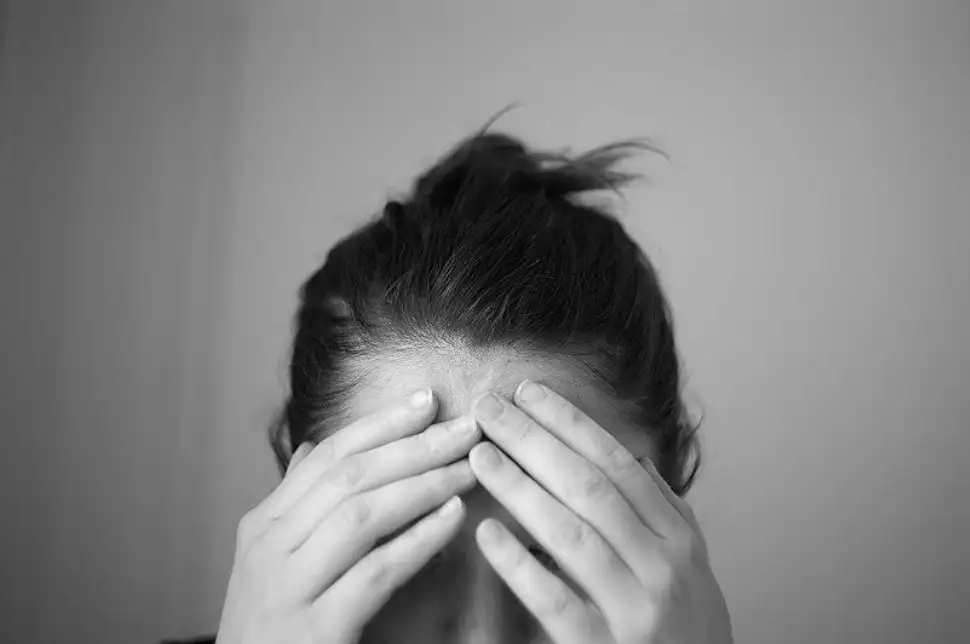Understanding vertigo and migraine

Ahmed Raza
 Reviewed by
Caitlin Goodwin,
Caitlin Goodwin, DNP, RN, CNM, is a Board Certified Nurse-Midwife, Registered Nurse, and freelance writer. She has over twelve years of experience in nursing practice.
Reviewed by
Caitlin Goodwin,
Caitlin Goodwin, DNP, RN, CNM, is a Board Certified Nurse-Midwife, Registered Nurse, and freelance writer. She has over twelve years of experience in nursing practice.
Migraine is a widespread disabling condition, leading to neurological disability, and the cause is unfortunately not well defined. Still, it seems to have a genetic basis. In some cases, migraines are accompanied by aura, visual disturbances, such as:
- Scotoma (blind spots)
- Specks
- Hemianopia (blindness in one half of the visual field)
- Olfactory and auditory hallucinations
- Weakness
- Speech difficulty
- Dizziness
Some less common symptoms are the sensation of floating, tilting, a feeling of walking on an uneven surface, and lightheadedness. These symptoms are reversible and develop over fifteen minutes and resolve within an hour as the headache begins. The pain is generally described as throbbing, and either involves one half of the head or both the front or back of the head. The symptoms worsen with movement or exertion. By identifying the pattern of ever-increasing attacks or a new daily persistent headache, you can begin to take control.
The appropriate management should include the study of any concomitant medical or psychological condition, lifestyle modifications, food and beverage trigger reductions, and pharmacological options.
Lifestyle modifications include
- Ensuring restful sleep
- Increasing activity or exercise level
- Eat at the same time each day
- Reducing stress
- Healthful eating
Food trigger reductions are
- Dietary factors (caffeine, chocolate, alcohol, aged cheeses, monosodium glutamate, nitrites)
- Weather-related: low pressure, storm fronts, changes of season
- Internal conditions: physical exertion, dehydration, sleep deprivation, menses

Photograph by Jose Navarro, distributed under a CC-BY 2.0 license.
Vertigo and dizziness are conditions that have various origins. Vertigo is a sensation of moving, swing, or swaying or of surrounding objects moving. It is often accompanied by nausea, vomiting, or difficulties with walking.
Peripheral vestibular vertigo includes conditions like:
- Benign paroxysmal positional vertigo (BPPV)
- Meniere’s disease (MD)
- Vestibular neuritis
- Bilateral vestibulopathy
While vertigo can occur at any time, it is more likely to occur with age. Unfortunately, it can cause considerable limitations in daily activities and quality of life. Treatment and management depend on the cause. However, some exercises can help improve balance and other symptoms.
On the other hand, migraine headaches and vertigo are commonly co-occurring problems, and two of the most frequent symptoms that lead patients to visit the neurologist. Also, vestibular migraine is a typical example of central vestibular vertigo. These conditions are not always simultaneous, but in general, these vertigo episodes tend to happen in patients with motion sickness or a history of migraine. The onset between these two may be several years.
Patients usually describe migraine-related vertigo as a feeling of unsteadiness. Spells are usually preceded by headache (with or without aura), nausea, and sensitivity to light or sound. Some don’t experience accompanying symptoms. However, the duration of vertigo can be shorter or longer than the duration of migraine aura since it ranges from a few seconds to a persistent condition of unsteadiness.

Photograph by george.bremer distributed under a CC BY-NC-ND 2.0
Unfortunately, some people are more susceptible to vertigo, and the etiology is not well understood. What is known is that women are more vulnerable than men.
Diagnosing it’s a real challenge since it can be confused with other diseases like strokes, méniére’s disease, or benign paroxysmal positional vertigo. However, most of the people who have migraines do not have vestibular symptoms occurring at the same time. With the onset of dizziness, it’s challenging to jump into a diagnosis.
For patients with a history of migraine, general criteria for vertigo-related migraines include at least five episodes along with vertigo dizziness that can last from five minutes to 72 hours, and any other migraine-related symptoms in half of the episodes.
When the attacks are frequent, the use of calcium channel blockers, beta-blockers, tricyclic antidepressants should be considered.
Treatment must be personalized for each patient. While vertigo and migraines may seem benign, they have significant adverse effects on daily activities. By understanding all aspects of the condition, you can get the best possible treatment.
Test your knowledge
- Over five minutes
- Over ten minutes
- Over fifteen minutes
- Over thirty minutes
- Within 30 minutes
- Within 1 hour
- Within 2 hours
- Within 4 hours
- Migraine with aura
- Scotoma
- Vertigo
- Hemianopia
- Men are more vulnerable than women
- Women are more vulnerable than men
- Both genders are equally vulnerable
- Children are more vulnerable than adults
- Only a few seconds
- Always exactly one hour
- From a few seconds to a persistent condition
- Always more than 24 hours
Stay on track!
Would you like a reminder when your ACLS certification expires, plus study tips?
How we reviewed this article
Our experts continually monitor the medical science space, and we update our articles when new information becomes available.
-
Current versionMail the author of this page
- Mar 23, 2021
-
Copy edited by:
Copy editors - Dec 08, 2020
-
Reviewed by:
 Caitlin Goodwin Caitlin Goodwin, DNP, RN, CNM, is a Board Certified Nurse-Midwife, Registered Nurse, and freelance writer. She has over twelve years of experience in nursing practice.
Caitlin Goodwin Caitlin Goodwin, DNP, RN, CNM, is a Board Certified Nurse-Midwife, Registered Nurse, and freelance writer. She has over twelve years of experience in nursing practice. - Dec 06, 2020
-
Written by:
Elizabeth Gonzalez Cueto